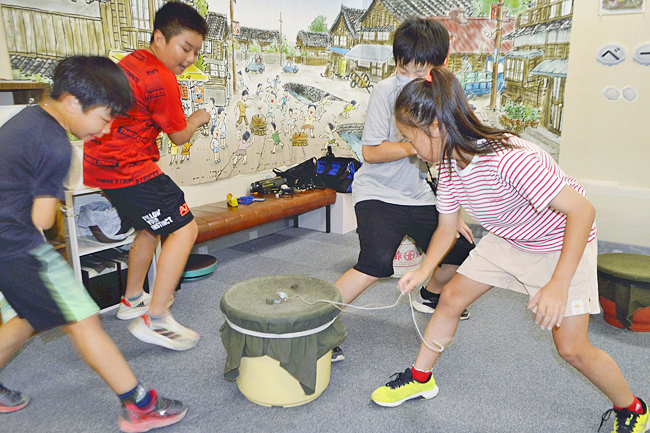TOKYO (YOMIURI) – At the Beigoma Shiryokan museum in Kawaguchi, a city in Japan known for its foundry industry, local elementary school students gather to play beigoma.
Beigoma tops are made of steel, with diameters of about three centimetres. They spin after being released onto a platform called a toko, sometimes emitting sparks as they collide with each other. The winning top is the one that pushes out all the other pieces, or the one that keeps spinning until the end.
Children in downtown Tokyo began playing the game around the end of the Taisho era (1912 to 1926), and it became very popular through the postwar period in the 1950s and 1960s. It is said to have its origins in the Heian period (794 to 1185), when a baigai, a Japanese ivory shell, was stuffed with sand and spun on a string. The name baigoma – which combined the name of the shell with koma (spinning top) – apparently became beigoma after it was introduced to the Kanto region.
The museum exhibits rare types of beigoma, including ones shaped like an ochoko sake cup that were produced in the Taisho era, and ceramic ones made during wartime when iron was in short supply. Beigoma inscribed with the names of baseball stars were particularly eye-catching, such as “Oh” (Sadaharu Oh), and Nagashima (Shigeo Nagashima). It is said that Nagashima was more popular among children because the kanji had more strokes, making the top heavier and therefore making it easier to win.


The museum was first on the premises of the city’s Nissan Chuzojo, a foundry specialising in the production of beigoma, in 2009. However, during the pandemic, the company moved to a smaller office, and the museum was at risk of closure.
But in 2022, the museum was donated to the city’s Board of Education and reopened in the Kawaguchi City Cultural Properties Centre.
“Beigoma is not something to just look at, but to play with,” said a member of staff from the city’s Board of Education Yuji Ide who supported the relocation at that time. “A space for children to play with the tops was indispensable for the museum.”
The city made efforts to promote the game, such as by setting aside time to teach beigoma games in elementary schools. Children who learned about the appeal of the game then began to visit the museum.
Beigoma used to be thought of as a boy’s game in the past. However, children today, regardless of gender, play against each other with shouts of joy. The mix of a retro game with new players can be seen at the museum.


